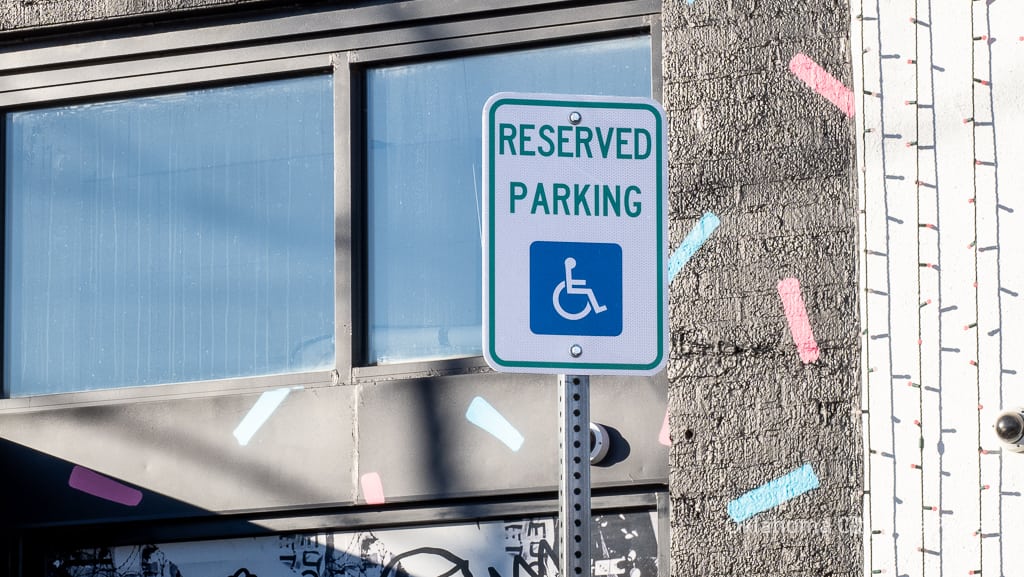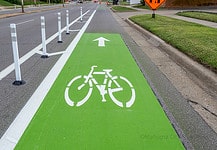Last Updated on December 31, 2023, 9:00 AM | Published: December 31, 2023
OKLAHOMA CITY — With new businesses, buildings, and infrastructure developments popping up seemingly everywhere you look right now in Oklahoma City, you might be wondering about some of the designs.
- Why are the new bus stations all elevated to be level with the bus entrances?
- Why are all the new sidewalks so wide?
- Why do all the new buildings have long, sometimes snaking ramps or unexpected elevators or lifts?
The answer, of course, is accessibility.
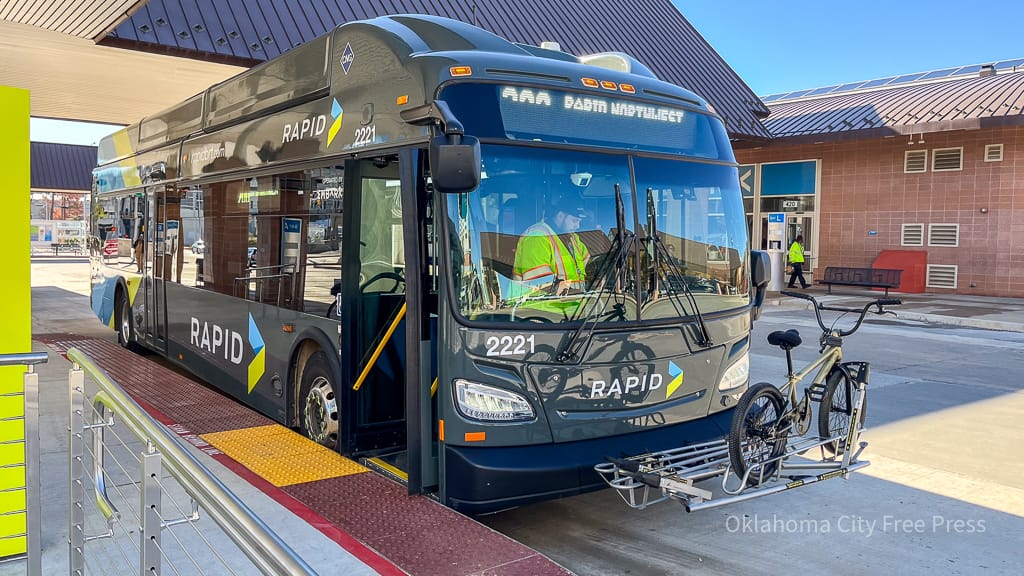
The majority of modern building and infrastructure designs are based on traditions and norms specifically targeted at the able-bodied, particularly at persons that do not require any assistance or experience any difficulty when walking, climbing stairs, or entering and exiting a vehicle.
But as visibility and solidarity have risen for the disabled community, and with the largest generation in American history now entering their senior years, the importance of accessibility-focused design in buildings, streets, parking, and renovations has taken on a higher level of priority.
And that means a wide range of strict regulations and building codes by which designers are meant to abide.
Building Code
Brand-new buildings and new construction projects experience the tightest regulations and inspections, ensuring that layouts and accessibility accommodations will be up to code upon the building’s opening, and will likely avoid costly improvements or mandatory renovations for years to come.
“Every new building is inspected and follows the Building Code,” said Keith Wilkinson, Administrative Manager and ADA Coordinator for the City of Oklahoma City. “That code incorporates the rules from the Americans with Disabilities Act, the ADA.”
The ADA established, as nationwide law, requirements on all new buildings for ramps, elevators, accessible doors and entrances, accessible restrooms and wheelchair-accommodating bathroom stalls, as well as reasonably wide rows and aisles and dedicated, wheelchair-accessible seating where applicable.
Existing Buildings
The requirements get more complicated, however, for existing buildings and structures undergoing renovations.
“The ADA was signed by President Bush in 1990, so generally anything already built at that time was grandfathered in,” Wilkinson said. “But those existing buildings, then, if they do a remodel or renovation, and they have to get it permitted, there’s a certain amount of ADA upgrades that they’ll be required to do.”

In that case, required accessibility upgrades are capped at 25% of the renovation’s total cost, meaning that inspectors will determine the most important or pressing ADA upgrades for the building and prioritize those before granting the new permit.
“Any time that you have to get a permit, it’s going to trigger those ADA requirements,” said Wilkinson. “From the city’s perspective, we don’t really care who’s paying for it. If you’re a business moving into a space, sometimes the owner will renovate for you, and sometimes you’ll do your own renovations. But if you’re doing an upgrade, and you’re getting a permit, you have to meet the ADA.”
Parking Lot Requirements
The requirements for accessible parking are less muddy, thanks to the city’s adoption of both the national ADA standards and a city ordinance regarding the use of designated accessible parking spaces.
“There’s a minimum number of accessible parking spaces required per total number of spaces, and it starts at one-in-twenty-five,” Wilkinson explained. “And if you get up to 1,000 spaces, it’s like 2%. So it’s kind of graduated between those two. But that’s certainly part of it. If you open a new business, there has to be accessible parking.”
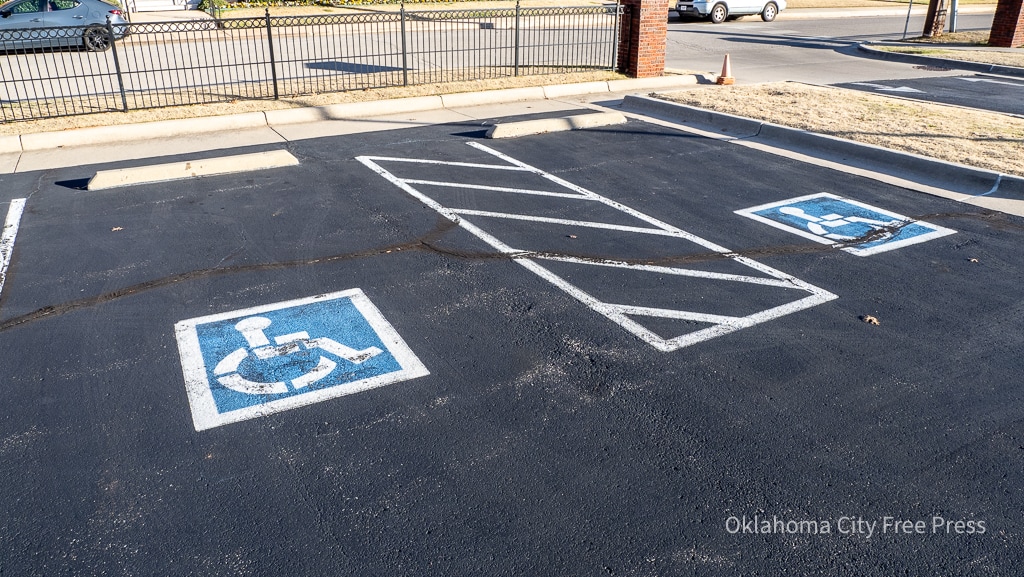
According to the requirements, accessible spaces must be designated by a sign clearly displayed, with the bottom of the sign no less than five feet from the pavement.
“You actually don’t have to have the emblem on the ground, you just need to have the sign,” Wilkinson said. “So it’s really easy to get compliance.”
On-Street Parking
With much of the city lately utilizing on-street parking, particularly in some of the busiest retail and recreation districts, the requirements are slightly more complex, though still closely monitored.
“On-street parking follows a different rule than parking lots,” said Wilkinson. “We still look for one-in-twenty-five, but we look at just the inside perimeter of that block, so not across the street, and we count the number of marked spaces.”
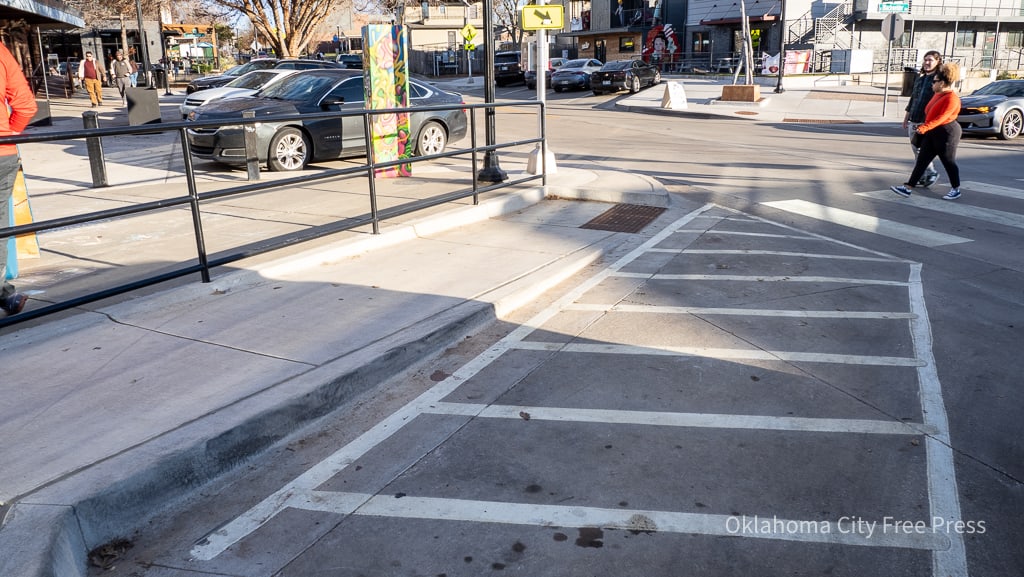
There is consideration for where best to place the required accessible spaces for on-street parking, but Wilkinson admits that it can get tricky and can change over time.
“Typically, you try to put them near the most popular business,” he said. “I mean, you’re never going to get it just right, you know. They may go out of business in a few years and somebody on the far side of that block opens, and now they’re the popular business, but the handicap spaces are now half a block away. So you just kind of do your best.”
Violations
All of these requirements are meant to be thoroughly inspected and deemed adequate at the building or renovation stage, before ever being open or accessible to the public. But sometimes businesses will open without the proper inspections or change things after inspection that can reduce accessibility and result in ADA violations.
“As the city’s ADA Coordinator, I probably get more calls about parking than anything else,” Wilkinson said. “And generally, it’s people saying that a business doesn’t have enough accessible parking spaces. So I’ll go and count the spaces and see if they’re complying, and if not, that’ll go to Code Enforcement, and they can cite the business.”
The reasons that a business might have too few accessible spaces – or, in the worst cases, none at all – are varied. But Wilkinson explained one common reason he’s seen repeatedly in just the last few years.
“Sometimes they’ll say, ‘we have pickup customers that want to park up close,'” he said. “And it’s like, sorry, but you don’t get to take the handicap signs down and put up ‘reserved for pickup customer’ signs. We saw a lot of that during COVID.”
Complaints
Unfortunately, city residents might find it difficult or complicated to file complaints about ADA violations and lack of accessibility accommodations themselves.
“We can inspect parking violations because we have a city ordinance for parking, so that’s a police issue, or people can send a complaint through the city’s Action Center,” Wilkinson said. “But if you’ve got an ADA complaint about a business not having ramps or any other kind of accessibility in the building, the city actually doesn’t look at that. That’s under the federal government.”
Wilkinson admits that this can create a significant challenge for residents.
“There’s absolutely nothing I or anybody else in the city can do about building issues, because we don’t have any jurisdiction over that,” he said. “And I know that seems strange. The Department of Justice gets so many complaints that they obviously can’t deal with all of these small things. I know they might send letters, but unless it’s a really big issue, they probably aren’t going to get involved.”
Which leaves only one other unfortunate – and likely costly – course of action.
“You have the courts,” Wilkinson said. “You can always hire an attorney and sue.”
How to report online
If you believe that a business is in violation of accessibility requirements, you can file a complaint with the City of OKC’s Action Center online at okc.gov/residents/action-center or with the federal Department of Justice at ada.gov/file-a-complaint.
Brett Fieldcamp has been covering arts, entertainment, news, housing, and culture in Oklahoma for nearly 15 years, writing for several local and state publications. He’s also a musician and songwriter and holds a certification as Specialist of Spirits from The Society of Wine Educators.
